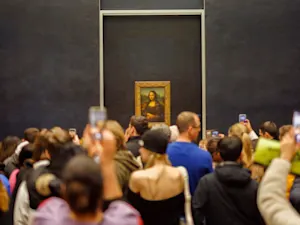
Loyalty Program Secrets Every Shopper Should Know
Loyalty programs seem like a no-brainer. They're advertised as a fast path to rewards, exclusive perks, and member-only deals — but is there more behind those enticing promises? While loyalty programs do provide some excellent benefits, there are several aspects companies keep in the shadows. Here's the inside scoop on what stores don't always tell you about their loyalty programs and how you can maximize their benefits while sidestepping the hidden pitfalls.
Points Expiration Isn't Always Obvious
Many loyalty programs advertise point accumulation, but they don't always tell you those points have an expiration date. For example, some programs only let you hold onto points for six months to a year, and once they expire, they're gone for good. Starbucks®, for instance, made a notable change to allow points to carry over without expiration in response to member feedback. Staying on top of your point balances is essential to ensure you get the full benefit from the loyalty program.
Promotions Are Great — But Not Always Widely Available
Special promotions like "double points days" or birthday freebies can add great value to loyalty programs. However, these events are often limited to certain locations or customer segments, making it easy to miss out if you're not keeping up with program details. For instance, in the Starbucks program, Double Star Days are not available in every region. This can be frustrating if you’re expecting these perks everywhere.
Strategic Spending Maximizes Rewards — But Can Encourage Overspending
Loyalty programs are structured to incentivize spending. By offering enticing bonuses, companies encourage you to spend more to "unlock" rewards, even if that means purchasing items you wouldn't usually buy. To avoid this trap, adopt a strategy where you only spend to accumulate points on items you truly need. Being mindful of your spending, especially during bonus point promotions, ensures you maximize your rewards without overstretching your budget.

Personal Data Is the Real Prize
Stores love loyalty programs not just for customer retention but because they provide valuable data about your shopping habits. Each time you scan your card or use the loyalty app, you're generating data on what you buy, when you buy, and where. This data is incredibly valuable, allowing companies to send you targeted marketing and personalize offers. However, be aware that your participation gives the company a detailed look into your purchasing patterns, something they might not readily disclose upfront.
Not All Rewards Are Created Equal
While loyalty programs can advertise a wide array of rewards, some perks are more valuable than others. High-value items, like free products or deep discounts, often require significant spending to reach, whereas smaller perks like birthday bonuses or limited-time discounts come with fewer points. For example, Starbucks offers a free birthday drink, but collecting enough points for larger rewards requires a higher commitment level. Knowing how to differentiate between high-value and low-value rewards can help you prioritize where to focus your spending.
Program Rules Change — Sometimes Without Notice
Loyalty programs can evolve, and changes in terms and conditions can affect your rewards. Companies can adjust the way points are earned, modify expiration dates, or alter what points can be redeemed for — all without much notice. For instance, Starbucks altered its rewards structure over the years, even removing tiered levels after customer feedback indicated it was confusing. Keep an eye on any communications from your loyalty programs to stay up-to-date on these shifts.
Redeeming Points Might Not Always Be Convenient
The process of redeeming rewards can be more complicated than anticipated. Certain rewards may only be available in specific stores or require that you make a purchase to redeem a "free" item. Understanding the redemption rules, like knowing which locations accept points or what additional purchase conditions exist, ensures you avoid potential disappointments.
Loyalty Programs Benefit Companies More Than You Think
At the core, loyalty programs are designed to keep you coming back and spending more money, making you a long-term, profitable customer. For example, Starbucks attributes 40% of its sales to loyalty program members, largely driven by the personalized offers that keep customers coming back. By understanding that loyalty programs are primarily beneficial to companies, you can engage with them in a way that maximizes your own benefits while keeping spending in check.
Loyalty programs can be a great way to unlock rewards, discounts, and unique perks — but only if you approach them wisely. By being aware of their hidden aspects and using them strategically, you can enjoy the perks without falling into overspending traps or compromising too much of your personal data. Next time you scan that loyalty card or open an app to check your rewards, remember these insights and use them to make loyalty programs work for you.
References: Unlock the Secrets of Loyalty Programs: Your Guide to Maximizing Rewards - LinkedIn | 8 Secrets that Make the Starbucks Loyalty Program So Popular
























